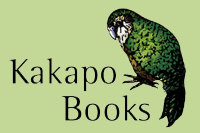 |
 |
New Zealand - A Pastoral Paradise? by
|
|
This anthology grew out of the New Zealand Study Group's 1998 conference held at New Zealand House, London, on 3 June. Speakers were invited to question the notion that New Zealand is a pastoral paradise. Roy Smith's account of the leading part played by New Zealand in the anti-nuclear movement in the Pacific region begins the anthology. It charts the various factors which led to the country's declaration, in 1984, that it was a 'nuclear free' state, and illustrates the difficulties experienced by New Zealand in the face of global nuclear threat. Moving from the global to the local, Maria Wickens discusses how contemporary writers have faced up to the need to recognise that the country has social and economic problems much as any other modern state, and are ready to explore such problems in detail. The dysfunctional family, one of Wickens's examples of this new focus, is further explored by David Callahan in relation to a range of films, and he concludes that the ideal of a functional family is difficult to discern in New Zealand cinema. Michelle Keown shows how prominent Maori writers have come to see the discourse of a special relationship with the land as part of a wider, politically informed vision for the future. Thomas Spooner also discusses Once Were Warriors (1994), and his study of the filmed version identifies how its gritty, yet chic, urban realism is influenced by African American directors. The depiction of the outright hostility of the environment to human occupation is another way of exploring current cultural issues. This is the premise of Jonathan Rayner's account of Vincent Ward's New Zealand films, which draw upon forbidding landscapes to point to the precariousness of settler culture, as well as contemporary uncertainties of New Zealand identity on both a personal and national level. Estella Tincknell finds a similarly hostile environment in her study of The Piano (1993), though here it functions less as a direct metaphor for crises of identity than as part of a wider, intricate appropriation of the tropes of European Gothic literature. The search for a self which is in some sense authentic is enacted by the New Zealand road movie. Ian Conrich shows how these films depict counter-cultural, Pakeha male behaviour, a defiance of authority and resistance to small-town conformism. The problematic nature of New Zealand identity is to be found here as well, for travel is seen to be a solution for those who are unable to settle. New Zealand offers vast, open spaces, and these can be employed as a variety of filmmaking locations. Andrea Wright considers the productions of Willow (1988) and Peter Jackson's The Lord of the Rings trilogy, which have utilised the land's potential to create a Tolkienesque 'other world'. This collection offers a wide range of standpoints upon the significance of the land for the symbolic and political construction of New Zealand. In the end, it is perhaps this diversity which indicates the land's enduring place in such debates. The front cover illustration for this book is one of many striking examples of stained glass work by the artist Kathy Shaw. |
||